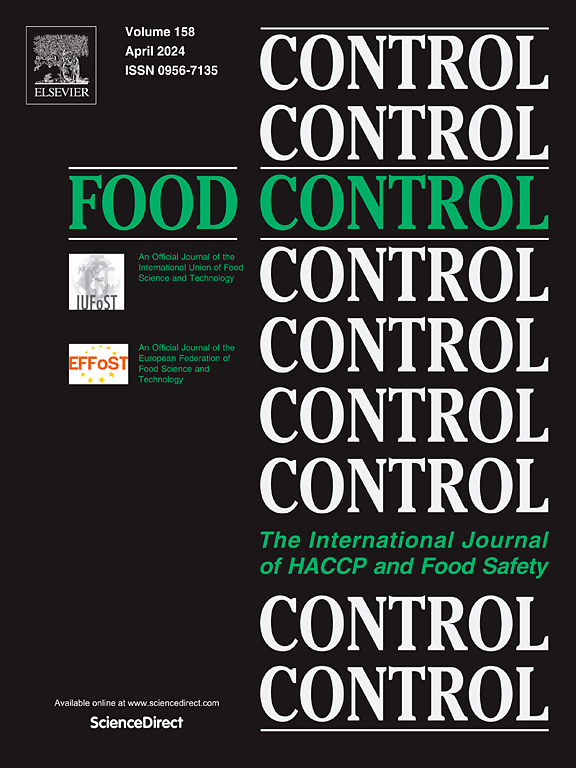基于多参数测定和化学信息学的希腊蜜露和花蜜的质量表征和植物起源描述
IF 6.3
1区 农林科学
Q1 FOOD SCIENCE & TECHNOLOGY
引用次数: 0
摘要
为了根据药物活性物质或有毒金属的出现来表征蜂蜜的质量,并确定蜜露和花蜜的植物来源,我们对50个蜂蜜样品进行了多参数测定:i)抗生素和磺胺类药物,ii)水分、总糖、电导率、游离酸度、pH、Pfund颜色、淀粉酶、总酚含量、抗氧化活性(组A),以及iii)矿物质(组B)。结果显示,抗生素和磺胺类药物均低于定量限(0.5 ~ 2 μg/kg),而有毒金属As、Be、Cd、Cr、Pb的痕量检测符合欧洲指令。数据(集A和集B)进行了化学信息学分析,并根据植物来源使用线性判别分析对样本进行了分类:根据交叉验证方法,两种情况下的分类率为74%,数据组合时的分类率为80%。此外,因子和偏最小二乘分析突出了与蜂蜜类型更多相关的关键参数。本文章由计算机程序翻译,如有差异,请以英文原文为准。
Quality characterization and botanical origin delineation of Greek honeydew and nectar honey based on poly-parametric determinations and chemoinformatics
To characterize the quality based on the occurrence of pharmaceutically active substances or toxic metals, and determine the botanical origin of honeydew and nectar honey, 50 honey samples were subjected to multi-parametric determinations: i) antibiotics and sulfonamides, ii) moisture, total sugars, electrical conductivity, free acidity, pH, Pfund color, diastase, total phenolic content, antioxidant activity (set A), along with iii) minerals (set B). Results showed that antibiotics or sulfonamides were below the limit of quantification (0.5–2 μg/kg), whereas traces of toxic metals (As, Be, Cd, Cr, Pb) were determined according to the European directives. The data (sets A and B) were subjected to chemoinformatics, and samples were classified according to botanical origin using linear discriminant analysis: 74 % in both cases, and 80 % when data were combined, according to the cross-validation method. In addition, factor and partial least squares analyses highlighted the key parameters that were associated more with the honey type.
求助全文
通过发布文献求助,成功后即可免费获取论文全文。
去求助
来源期刊

Food Control
工程技术-食品科技
CiteScore
12.20
自引率
6.70%
发文量
758
审稿时长
33 days
期刊介绍:
Food Control is an international journal that provides essential information for those involved in food safety and process control.
Food Control covers the below areas that relate to food process control or to food safety of human foods:
• Microbial food safety and antimicrobial systems
• Mycotoxins
• Hazard analysis, HACCP and food safety objectives
• Risk assessment, including microbial and chemical hazards
• Quality assurance
• Good manufacturing practices
• Food process systems design and control
• Food Packaging technology and materials in contact with foods
• Rapid methods of analysis and detection, including sensor technology
• Codes of practice, legislation and international harmonization
• Consumer issues
• Education, training and research needs.
The scope of Food Control is comprehensive and includes original research papers, authoritative reviews, short communications, comment articles that report on new developments in food control, and position papers.
 求助内容:
求助内容: 应助结果提醒方式:
应助结果提醒方式:


